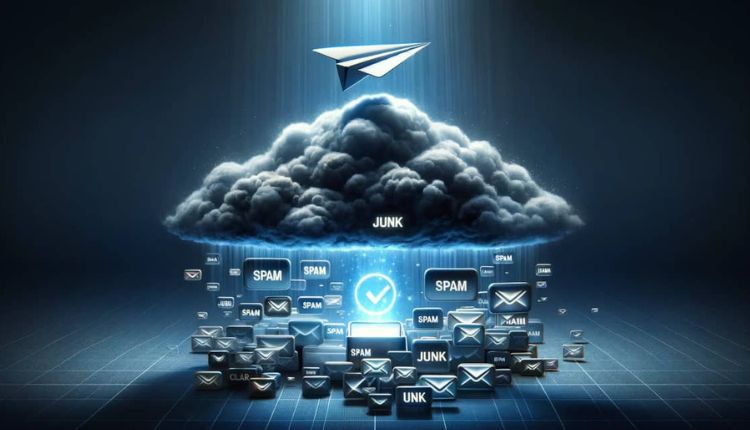Gmail DMARC: Enhancing Email Security and Deliverability
Gmail DMARC
Gmail DMARC is a powerful email authentication protocol designed to combat email fraud and enhance the security of Gmail accounts. By implementing DMARC (Domain-based Message Authentication, Reporting, and Conformance), Gmail users can effectively protect their email domains from unauthorized use and ensure that only legitimate emails are delivered to recipients’ inboxes.
Understanding Gmail DMARC
What is DMARC?
DMARC, which stands for Domain-based Message Authentication, Reporting, and Conformance, is an email authentication protocol that allows domain owners to specify how email messages sent from their domain should be handled.
Importance of DMARC for Gmail
In the context of Gmail, DMARC plays a crucial role in preventing email spoofing and phishing attacks by enabling domain owners to set policies for email authentication and enforcement.
How DMARC works with Gmail
When an email is sent from a domain with DMARC implemented, Gmail checks the email against the DMARC policy specified by the domain owner. If the email passes authentication checks, it is delivered to the recipient’s inbox; otherwise, appropriate actions are taken based on the DMARC policy.
Configuring Gmail DMARC
Setting up DMARC for Gmail
Configuring DMARC for Gmail involves creating and publishing a DMARC record in the DNS (Domain Name System) settings of your domain. This record contains instructions for how Gmail should handle emails sent from your domain.
DMARC record for Gmail
The DMARC record includes directives such as “p=none” (monitoring mode), “p=quarantine” (quarantine mode), or “p=reject” (reject mode), which specify the desired actions for emails that fail DMARC authentication.
Verifying DMARC for Gmail
After setting up the DMARC record, it’s essential to verify its effectiveness by monitoring DMARC reports and addressing any issues or discrepancies.
Troubleshooting DMARC for Gmail
If you encounter issues with DMARC implementation for Gmail, troubleshooting steps may include reviewing DMARC reports, checking DNS settings, and seeking assistance from email security experts.
Advantages of Gmail DMARC
Enhanced email security
By implementing DMARC for Gmail, domain owners can significantly reduce the risk of email fraud, spoofing, and phishing attacks, thereby enhancing overall email security.
Improved email deliverability
Gmail DMARC helps improve email deliverability by ensuring that legitimate emails are authenticated and delivered to recipients’ inboxes, while unauthorized emails are either quarantined or rejected.
Protection against email spoofing
DMARC for Gmail provides robust protection against email spoofing, ensuring that emails sent from your domain are genuine and trustworthy, thereby safeguarding your brand reputation and credibility.
Common Challenges
Understanding DMARC reports
Interpreting DMARC reports generated by Gmail can be challenging for users who are unfamiliar with email authentication protocols and DNS configurations.
Addressing SPF alignment issues
SPF (Sender Policy Framework) alignment issues can arise when the “from” address in an email does not match the authorized sender specified in the SPF record, leading to authentication failures.
Dealing with DKIM failures
DKIM (DomainKeys Identified Mail) failures occur when the cryptographic signature added to an email by the sending domain does not match the signature verified by the recipient domain, resulting in authentication failures.
Managing DMARC policy enforcement
Determining the appropriate DMARC policy (none, quarantine, or reject) for your Gmail domain and effectively enforcing it without disrupting legitimate email traffic can be a complex task.
Best Practices
Regular monitoring and updates
Regularly monitor DMARC reports and DNS configurations to ensure proper functioning and effectiveness of Gmail DMARC implementation, and update policies as needed based on evolving threats and requirements.
Aligning SPF, DKIM, and DMARC policies
Ensure alignment between SPF, DKIM, and DMARC policies for Gmail domains to maximize email authentication effectiveness and minimize false positives and negatives.
Gradual policy enforcement
When implementing DMARC for Gmail, consider gradually enforcing policies (e.g., starting with “p=none” and progressing to “p=quarantine” or “p=reject”) to minimize disruptions and allow time for adjustments.
Gmail DMARC and Email Marketing
Impact of DMARC on email marketing
Gmail DMARC can have a significant impact on email marketing campaigns, as failure to comply with DMARC policies can result in emails being diverted to spam or rejected altogether.
Ensuring compliance with DMARC policies
Email marketers must ensure compliance with Gmail DMARC policies by adopting best practices for email authentication, sender reputation management, and list hygiene.
Strategies for maintaining email deliverability
To maintain high email deliverability rates in the face of Gmail DMARC enforcement, email marketers should focus on building and maintaining a positive sender reputation, optimizing email content and formatting, and engaging with subscribers effectively.
Case Studies
Real-world examples of successful Gmail DMARC implementations
Several organizations have successfully implemented Gmail DMARC to enhance email security and deliverability, resulting in reduced phishing incidents and improved brand trust.
Challenges faced and solutions adopted
While implementing Gmail DMARC, organizations may encounter challenges such as DNS configuration errors, authentication failures, and policy enforcement issues. However, with proper guidance and expertise, these challenges can be overcome, and the benefits of Gmail DMARC fully realized.
How to check if your domain has DMARC enabled
To check if your domain has DMARC enabled, you can utilize online tools such as a DMARC checker. These tools can verify whether your domain has a DMARC record published and what policy it enforces.
As a domain owner, implementing DMARC is a simple yet powerful measure to safeguard your email reputation and protect your users. There are numerous free and paid tools available, such as PowerDMARC, which can assist you in checking your DMARC record status and provide guidance throughout the implementation process. Don’t hesitate – take charge of your email security and enable DMARC today!
FAQs
What is the purpose of DMARC for Gmail?
- The purpose of DMARC for Gmail is to enhance email security by allowing domain owners to specify policies for email authentication and enforcement, thereby reducing the risk of email fraud and phishing attacks.
How do I set up DMARC for my Gmail account?
- To set up DMARC for your Gmail account, you need to create and publish a DMARC record in the DNS settings of your domain, specifying the desired policy for handling unauthorized emails.
Why is DMARC important for email security?
- DMARC is important for email security because it helps prevent email fraud, spoofing, and phishing attacks by ensuring that only legitimate emails from authenticated senders are delivered to recipients’ inboxes.
What should I do if I encounter issues with DMARC for Gmail?
- If you encounter issues with DMARC for Gmail, such as authentication failures or policy enforcement problems, you may need to review DMARC reports, check DNS configurations, and seek assistance from email security experts.
Can DMARC impact my email marketing efforts?
- Yes, DMARC can impact your email marketing efforts, as failure to comply with DMARC policies can result in emails being diverted to spam or rejected altogether, affecting deliverability and campaign performance.
Are there any risks associated with implementing DMARC for Gmail?
- While implementing DMARC for Gmail can enhance email security and deliverability, there are potential risks such as misconfiguration errors, false positives, and disruptions to legitimate email traffic. However, with proper planning and guidance, these risks can be mitigated effectively.
Conclusion
In conclusion, Gmail DMARC is a powerful tool for enhancing email security and deliverability, protecting against email fraud and phishing attacks, and maintaining brand trust and credibility. By understanding the principles of DMARC, following best practices, and staying vigilant against evolving threats, Gmail users can ensure a safe and reliable email communication environment.



